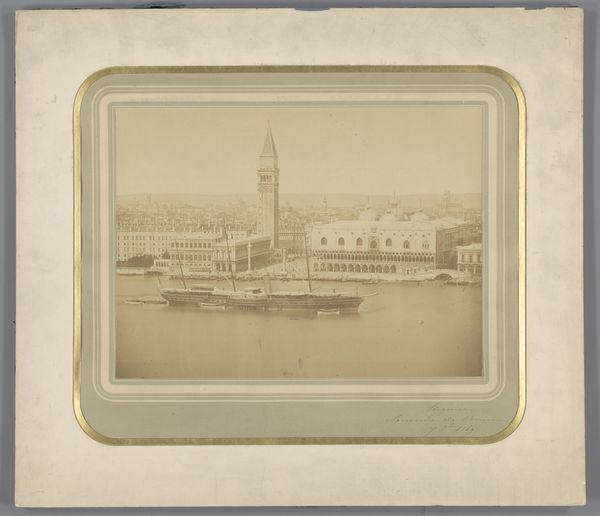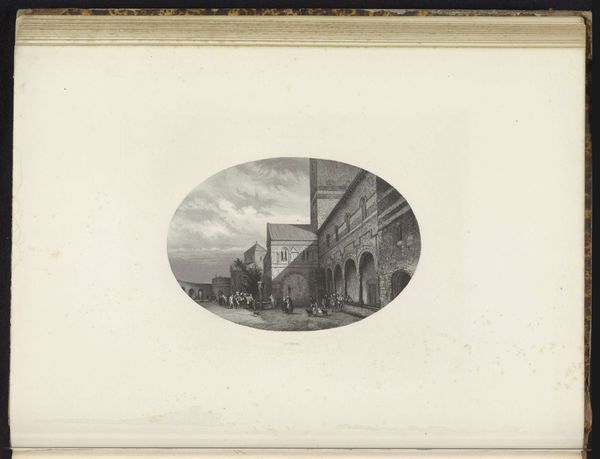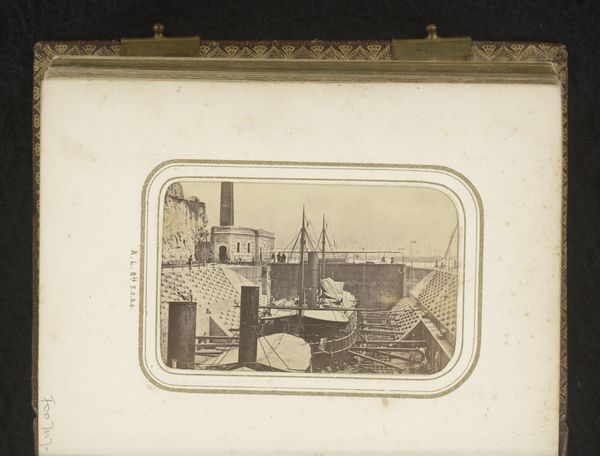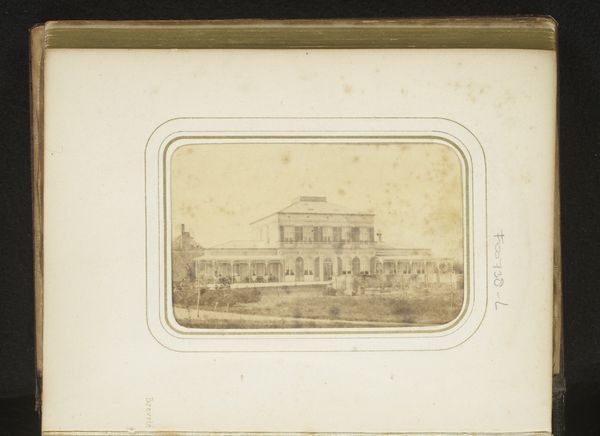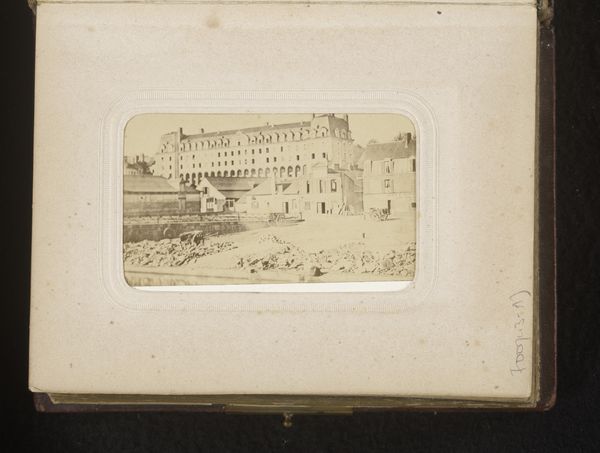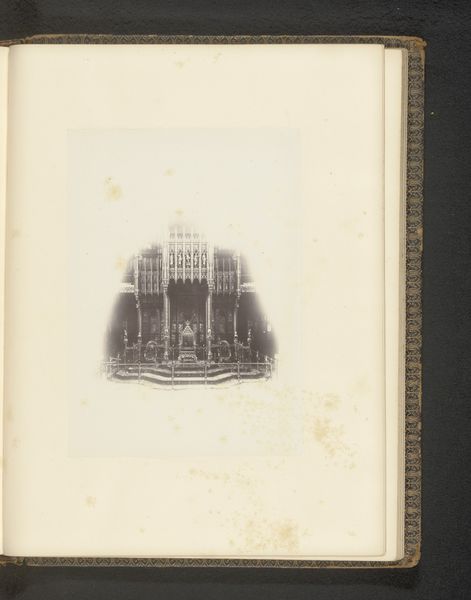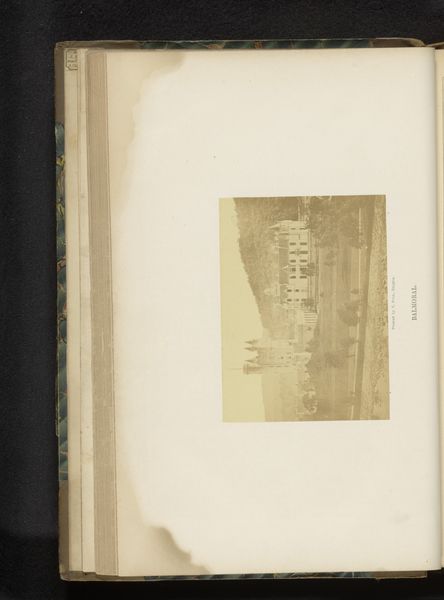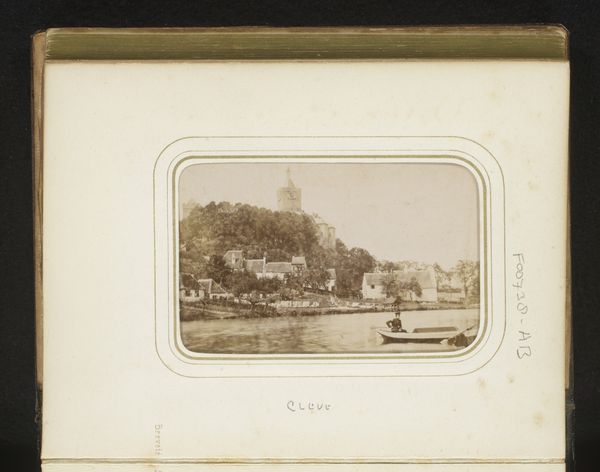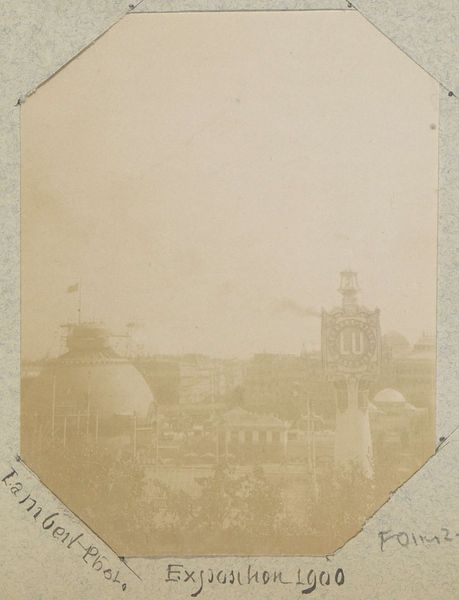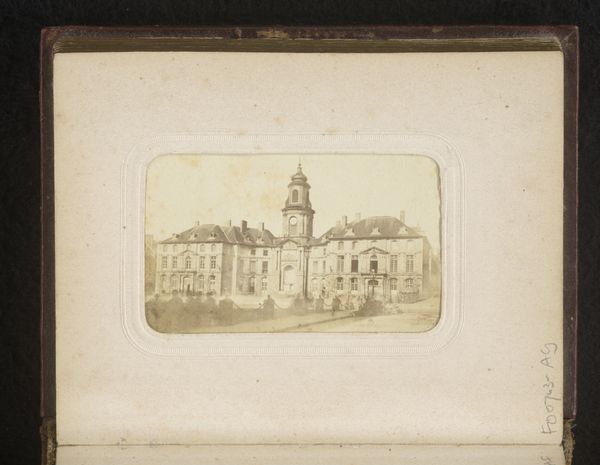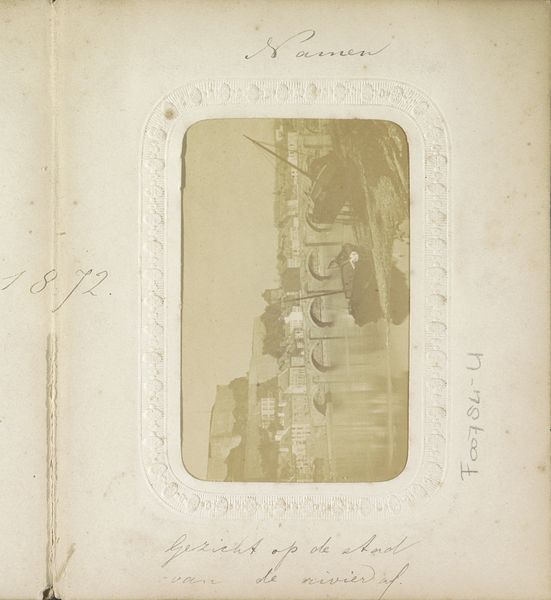
photography, albumen-print
#
landscape
#
photography
#
cityscape
#
watercolor
#
albumen-print
#
realism
Dimensions: height 84 mm, width 52 mm
Copyright: Rijks Museum: Open Domain
Curator: This is a striking albumen print, “Gezicht op Issoire in Auvergne, Frankrijk," dating from between 1860 and 1880 by Toulot-Laroche. Editor: It's incredibly delicate. The tones are soft, almost like a faded dream. I am drawn to the rooftops that fill the foreground with that distant mountain range. What do you think about the photographer's production process? Curator: The albumen process itself is fascinating. It involves coating paper with egg whites and then sensitizing it with silver nitrate. It's a laborious process that was very common for photographs in the 19th century. Thinking about the photographer, Toulot-Laroche must have hauled some heavy equipment for what looks like a landscape. How would that labour alter his perception of place and prompt particular representational decisions? Editor: Certainly it speaks to a very particular perspective. Consider the way this photo fits within the culture of city views at the time. There's an emerging tourism industry in this period— people eager to see and document places like Issoire. Albumen prints allowed for a relatively mass-produced image, making it much more accessible for travelers to acquire and keep a momento, than, say, painting, and more immediate than a print. What do you suppose drove someone to create or consume it? Curator: The fact that the photographer is perched on high, taking an encompassing view—it's asserting a certain level of access and control. As photographic processes become refined, it becomes easier to document urbanization, landscapes, and monuments on the fly and integrate these images with others and other artifacts into a travelogue. Editor: Exactly. These photographs functioned as both documentation and as instruments in shaping popular ideas about places. And I agree with you regarding the implied status. Curator: In the image itself, you note the buildings. This medium helped render images into standardized artifacts for colonial administrators and elites alike, shaping the political and visual landscape of the day. Editor: Right. It raises questions about how power and identity play out in seemingly simple landscapes. A piece that demands more inquiry into the historical context of how we consume images. Curator: Precisely. Examining the processes and material used adds an extra dimension to our understanding. Editor: Well, looking more closely certainly adds to how deeply one perceives the picture overall.
Comments
No comments
Be the first to comment and join the conversation on the ultimate creative platform.
